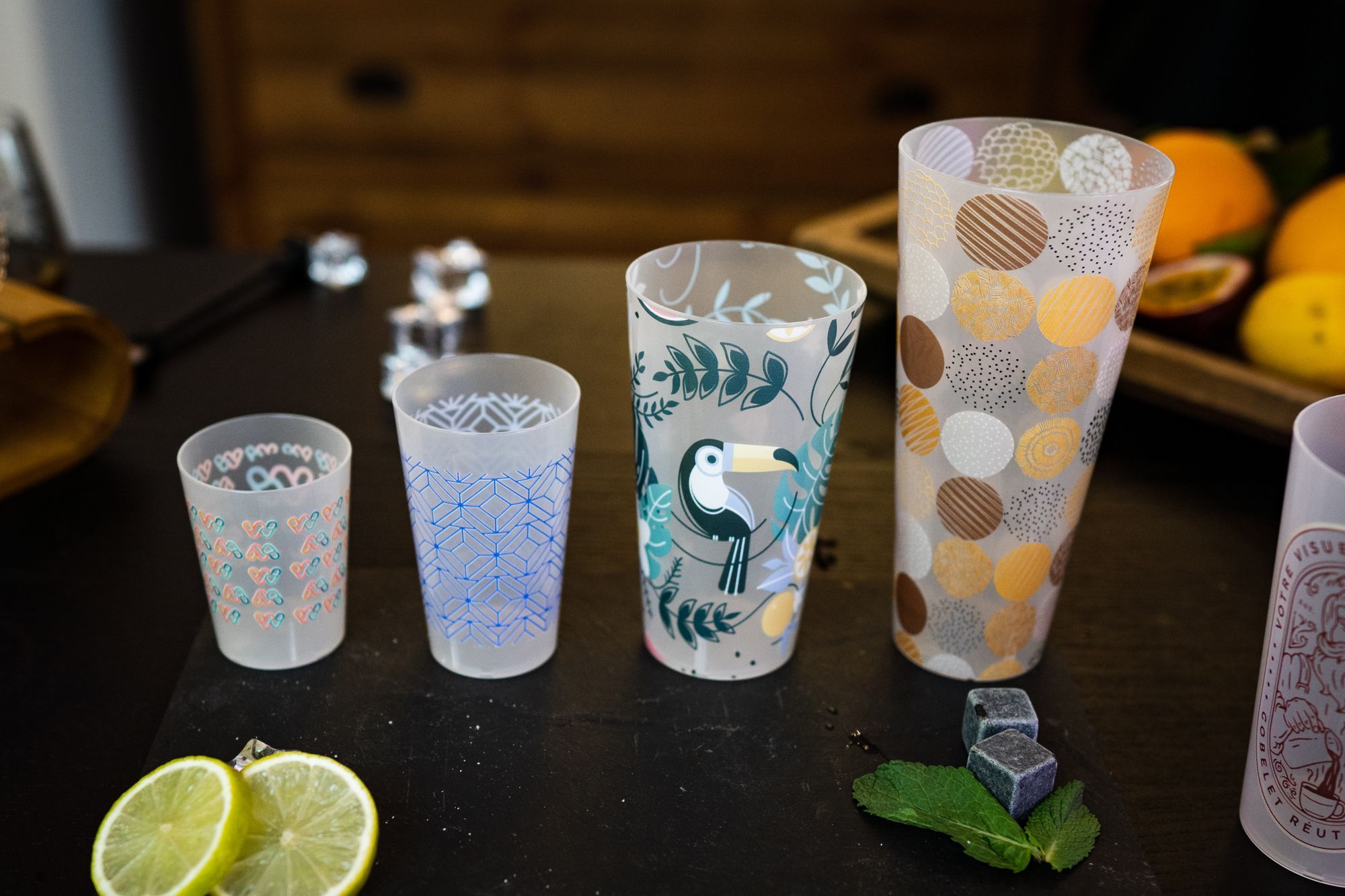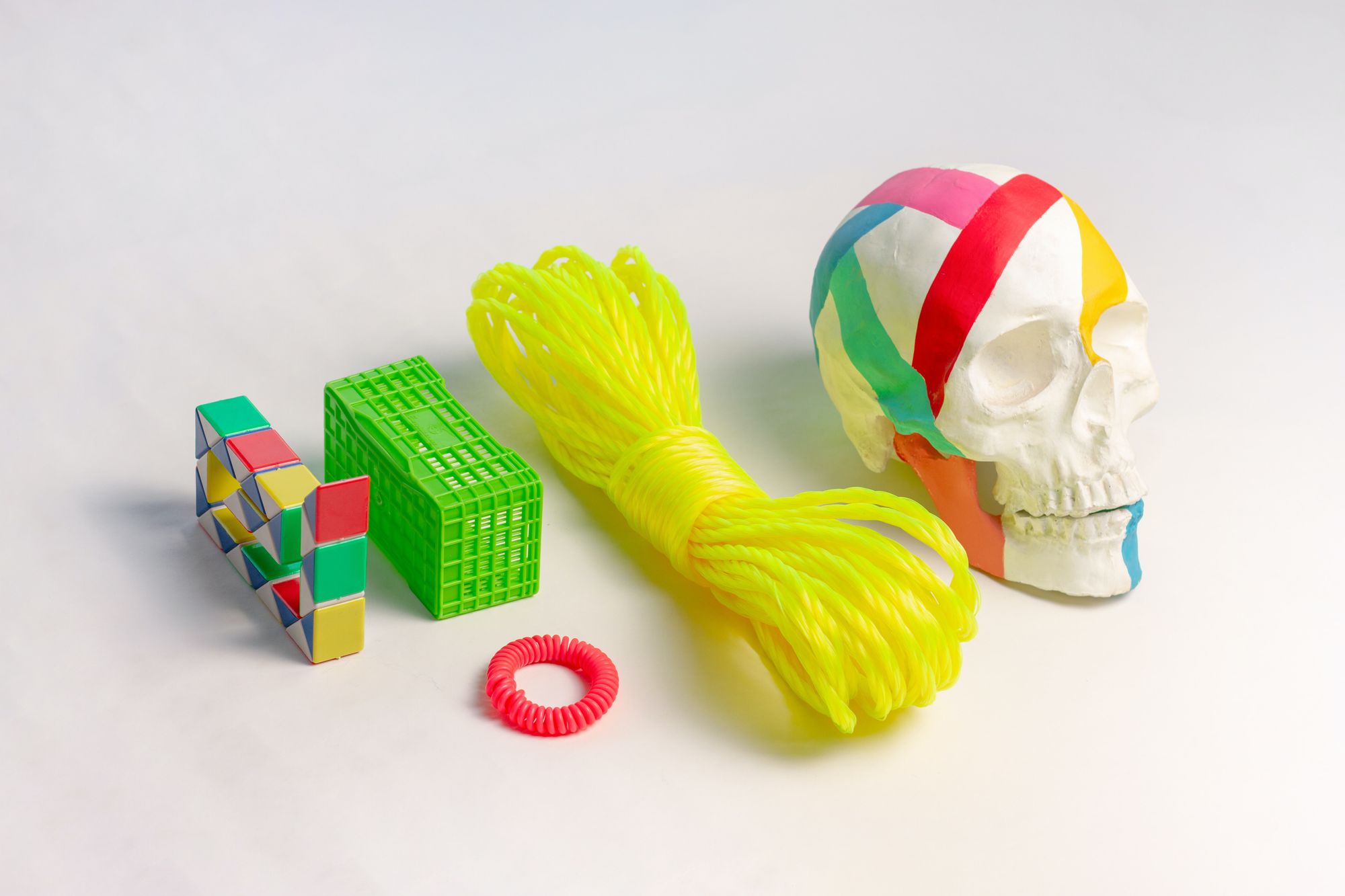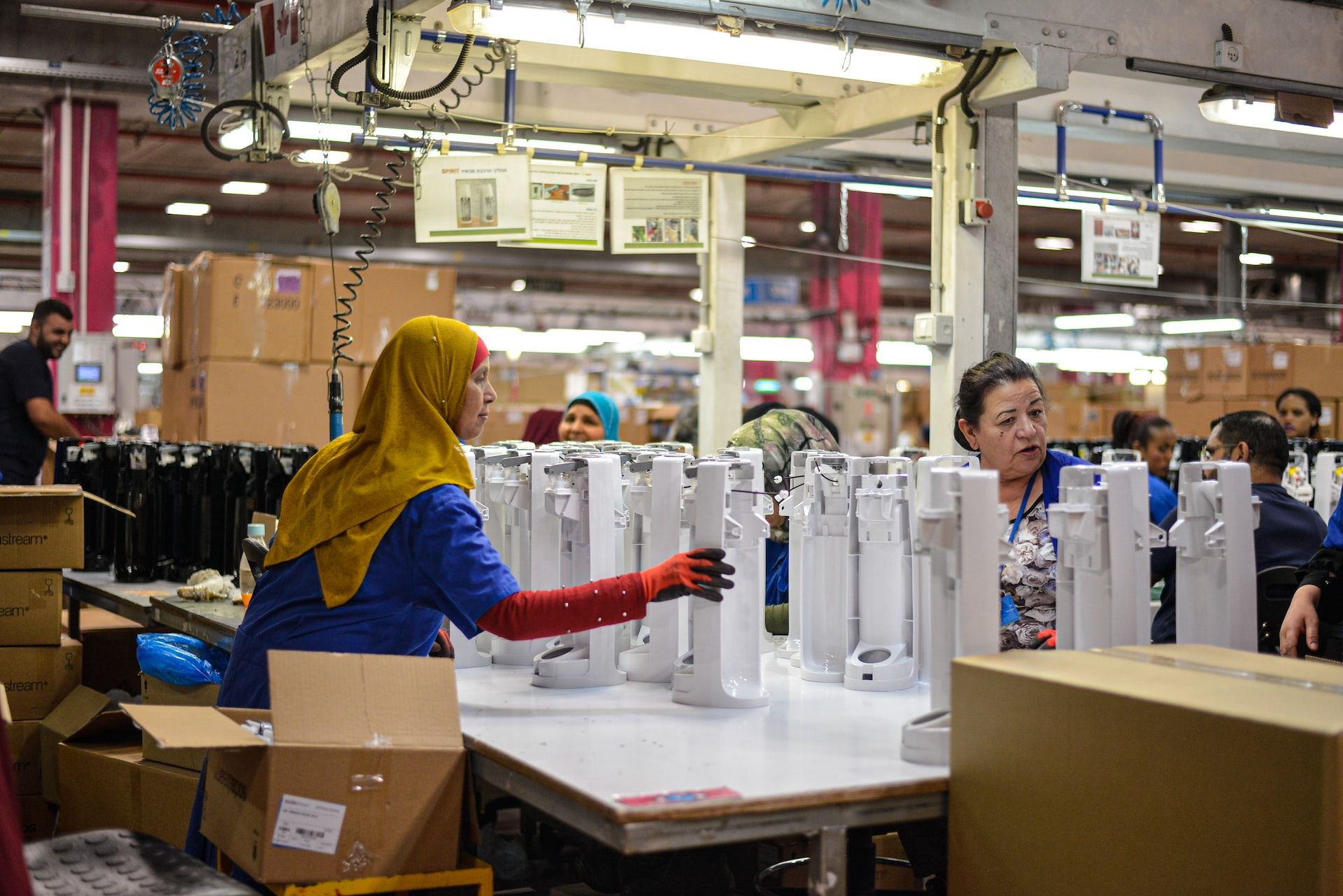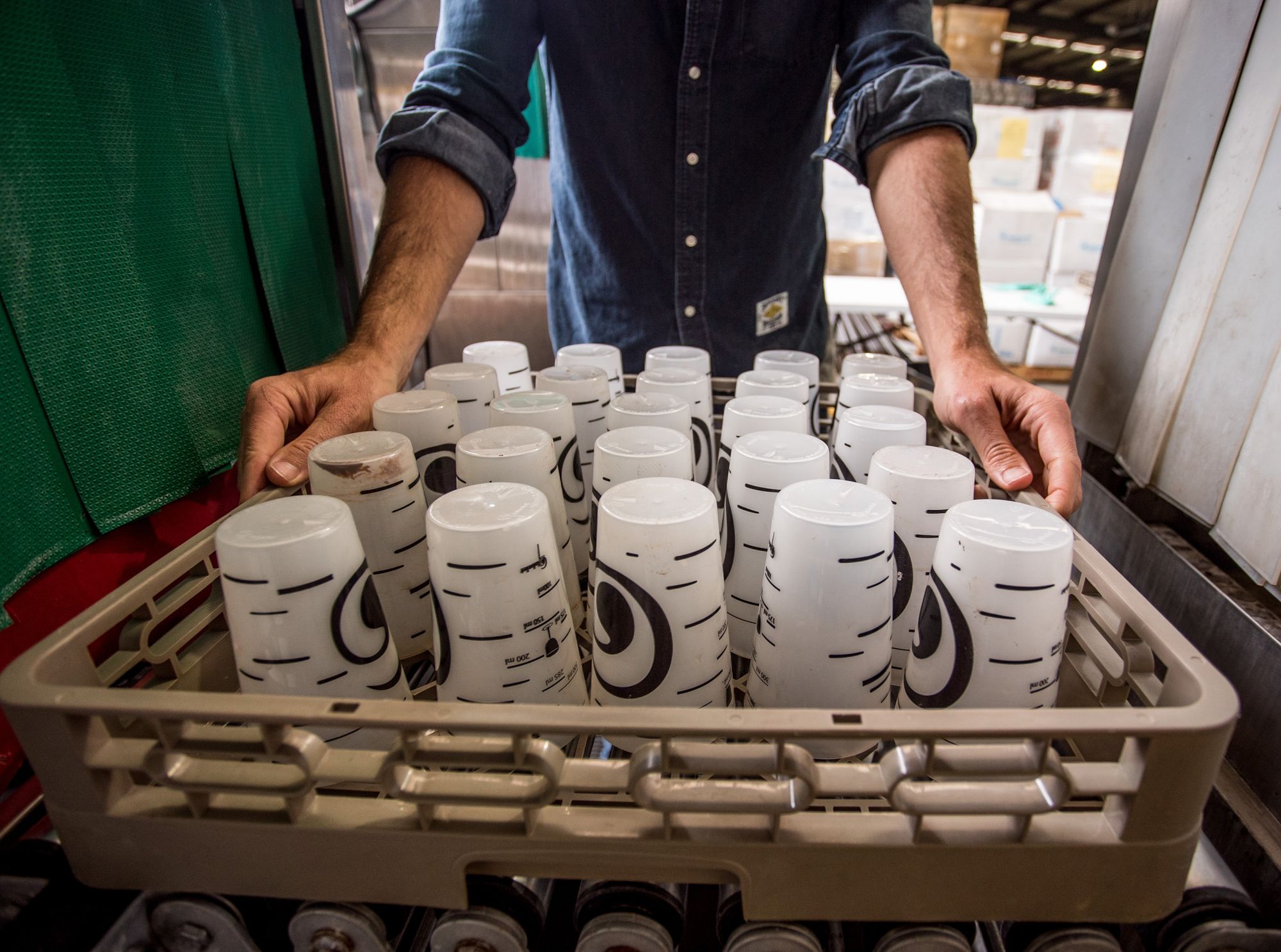From our everyday products to groundbreaking innovations, plastic plays a significant role in our lives. But what does the future of this industry look like?
Will it continue to thrive, or are we on the brink of a plastic apocalypse? Fear not, because in this article, we'll explore the latest trends, technologies, and possibilities that lie ahead in the world of plastic manufacturing.
As we move towards a more sustainable future, the plastic manufacturing industry is poised to undergo significant changes. By understanding these changes and their implications, we can ensure that the industry continues to play a vital role in our economy while minimizing its environmental impact.

So, fasten your seatbelts, and let's dive into the future of plastic!
- Innovations in Plastic Manufacturing Technology
- Sustainable Plastic Manufacturing: Challenges and Opportunities
- Role of Plastic Manufacturing in the Global Economy
- Plastic Manufacturing Regulations and Compliance Standards
- Environmental Impact of Plastic Manufacturing
- Advancements in Plastic Manufacturing Materials
- Global Plastic Manufacturing Market Trends and Forecasts
- Automation and Robotics in Plastic Manufacturing
- Conclusion
- Key Takeaways
Innovations in Plastic Manufacturing Technology
Innovation is key to the growth and success of any industry, including the plastic manufacturing industry. Over the years, advancements in technology have brought about new and improved ways of manufacturing plastic products. These innovations have led to higher-quality products, increased efficiency, and reduced waste.
This section will discuss some of the latest innovations in plastic manufacturing technology.
3D Printing
3D printing has revolutionized the plastic manufacturing industry by allowing for the creation of complex shapes and designs. This technology uses a computer program to print layers of material on top of each other to create a 3D object.
This method is more cost-effective than traditional manufacturing methods for small batch sizes, reducing the need for tooling and production line setup.
Smart Automation
Smart automation involves the use of machines and software to automate and optimize the manufacturing process. This includes the use of robots, sensors, and software to monitor and control the manufacturing process. The technology can identify defects early in production, reduce waste, and increase efficiency.
Biodegradable Plastics
Biodegradable plastics are an innovative solution to the problem of plastic waste. These plastics break down quickly and naturally, reducing the amount of plastic waste in the environment.
The technology used in manufacturing these plastics includes using natural materials such as corn starch or cellulose. They are commonly used for food packaging and disposable cutlery and straws.
Nanocomposites
Nanocomposites are plastics that have been reinforced with nanoparticles. The technology used in manufacturing these plastics involves using small particles, usually between 1 and 100 nanometers, to improve the plastic's strength, durability, and heat resistance. This technology is commonly used in the automotive and aerospace industries.
High-Performance Polymers
High-performance polymers are plastics that have been designed to perform in extreme environments. These plastics can withstand high temperatures, chemical exposure, and intense pressure. The technology used in manufacturing these plastics includes using advanced materials such as Kevlar or carbon fiber.
Recycling Technology
Recycling technology involves the use of advanced techniques to recycle plastic waste. This includes the use of pyrolysis, a process that converts plastic waste into fuel or other chemicals. Another method is mechanical recycling, which involves shredding and melting plastic waste to create new products.
Additive Manufacturing
Additive manufacturing involves the use of 3D printing technology to manufacture plastic products. This technology allows for the creation of complex shapes and designs and the ability to print multiple materials in one product.
Sustainable Plastic Manufacturing: Challenges and Opportunities
Plastic manufacturing has become an integral part of modern society, with plastic products being used in almost every aspect of daily life. However, the environmental impacts of plastic waste have become a growing concern, and sustainable plastic manufacturing has become a critical issue for the industry. Here are some of the challenges and opportunities of sustainable plastic manufacturing:
Recycling Challenges: One of the primary challenges in sustainable plastic manufacturing is the recycling process. Different types of plastics require different recycling methods, and the lack of proper infrastructure and knowledge about plastic recycling can make the process difficult.
Additionally, contamination of plastic waste with non-recyclable materials can further complicate recycling efforts.
Raw Material Selection: Another significant challenge in sustainable plastic manufacturing is the selection of raw materials.
Traditional petroleum-based plastics have a significant environmental impact, and there is a growing need for more sustainable alternatives such as bio-based plastics, recycled plastics, and biodegradable plastics.
Manufacturing Processes: The manufacturing process itself can also have a significant impact on the environment, with high energy consumption, water usage, and greenhouse gas emissions.
However, advancements in technology, such as the use of renewable energy sources and closed-loop systems, can help reduce the environmental impact of plastic manufacturing.
Design for Sustainability: One way to address the challenges of sustainable plastic manufacturing is through design for sustainability. This involves designing plastic products with their entire lifecycle in mind, from raw material selection to end-of-life disposal. This approach can help reduce waste and promote recycling and reuse.
Circular Economy: A circular economy model is another opportunity for sustainable plastic manufacturing. In this model, plastic waste is seen as a valuable resource, and the goal is to keep materials in use for as long as possible.
This involves designing products with recyclability and reusability in mind and creating closed-loop systems that keep materials in circulation.
Collaboration and Partnerships: Addressing the challenges of sustainable plastic manufacturing requires collaboration and partnerships between the industry, policymakers, and consumers. The industry must work together to develop sustainable solutions and innovations, while policymakers can support sustainable practices through regulations and incentives.
Consumers can also play a role in sustainable plastic manufacturing by making informed choices and properly disposing of plastic waste.
Role of Plastic Manufacturing in the Global Economy
Plastic manufacturing is a critical component of the global economy, with a wide range of applications across industries. Here are some key points to consider about the role of plastic manufacturing in the global economy:
- Contribution to GDP: Plastic manufacturing is a significant contributor to the global economy, with a value of over $500 billion in 2020. It accounts for a substantial share of many countries' GDP, including the United States, China, and Japan.
- Employment: The plastic manufacturing industry provides employment opportunities to millions of people worldwide. According to the Plastics Industry Association, over 1 million people were employed in the U.S. plastics industry in 2020.
- Consumer goods: Plastic is widely used in the production of consumer goods, including packaging, toys, and electronics. The demand for plastic products has increased as a result of the growing global population and rising incomes in emerging economies.
- Medical applications: Plastic plays a critical role in the healthcare industry, with applications in medical devices, equipment, and packaging. The COVID-19 pandemic has highlighted plastic's importance in producing personal protective equipment (PPE) and other medical supplies.
- Transportation: Plastics are used extensively in the automotive and aerospace industries, with applications in vehicle interiors, exterior components, and aircraft interiors. Plastic's lightweight and durable nature make it an ideal material for use in these applications.
- Infrastructure: Plastic is also used in the construction industry, with applications in pipes, wiring, and insulation. The use of plastic in infrastructure projects can help reduce costs and improve durability.
- Environmental concerns: The plastic manufacturing industry has come under increasing scrutiny in recent years due to environmental pollution and waste concerns. Efforts are underway to develop sustainable plastic manufacturing practices and reduce plastic waste through recycling and other measures.
Overall, plastic manufacturing plays a crucial role in the global economy, with applications across a wide range of industries.
However, there are also growing concerns about the environmental impact of plastic waste, highlighting the need for more sustainable manufacturing practices and increased investment in recycling and waste reduction initiatives.
Plastic Manufacturing Regulations and Compliance Standards
Plastic manufacturing has revolutionized the way we live and work, with plastic products found in almost every aspect of modern life. However, the widespread use of plastics has also raised concerns about their impact on the environment and public health.
As a result, various regulations and compliance standards have been established to ensure the safe and responsible production, use, and disposal of plastics.
Here are some of the key regulations and compliance standards in plastic manufacturing:
- Environmental Protection Agency (EPA) regulations: The EPA is responsible for regulating the production and disposal of plastics in the United States. The EPA's regulations cover a range of issues, including air and water emissions, hazardous waste disposal, and chemical safety.
- Occupational Safety and Health Administration (OSHA) standards: OSHA sets safety standards for workers in the plastic manufacturing industry to prevent workplace injuries and illnesses. These standards cover topics such as ventilation, personal protective equipment, and chemical exposure.
- Food and Drug Administration (FDA) regulations: The FDA regulates plastics used in food packaging and medical devices to ensure they are safe for human consumption. Plastics used in food packaging must be approved as food contact substances, while medical device plastics must meet specific biocompatibility requirements.
- European Union (EU) regulations: The EU has established various regulations related to plastic production, use, and disposal, including the Registration, Evaluation, Authorization, and Restriction of Chemicals (REACH) regulation and the Waste Electrical and Electronic Equipment (WEEE) directive.
- International Organization for Standardization (ISO) standards: The ISO has developed a range of standards related to plastic manufacturing, including standards for quality management, environmental management, and occupational health and safety.
- Recycling and waste management standards: Various organizations have established recycling and waste management standards for plastics to promote responsible disposal and reduce plastic waste in the environment. Examples include the Plastics Recycling Mark, the Sustainable Packaging Coalition's Design for Recyclability Guidelines, and the Zero Waste International Alliance's Zero Waste Hierarchy.
In addition to these regulations and standards, plastic manufacturers can participate in industry-specific certifications and voluntary programs to demonstrate their commitment to responsible production and environmental stewardship.
For example, the Association of Plastic Recyclers (APR) has established a certification program for companies that produce recycled plastics that meet certain quality standards.
Compliance with these regulations and standards is critical for plastic manufacturers to ensure the safety of their products and protect the environment and public health. However, compliance can also be costly and time-consuming, particularly for smaller manufacturers.
As a result, a growing interest in sustainable plastic manufacturing practices that go beyond regulatory compliance and focus on reducing environmental impacts and improving resource efficiency has been growing.
Environmental Impact of Plastic Manufacturing
Here are some points to consider regarding the environmental impact of plastic manufacturing:
- Carbon emissions: The production of plastic requires large amounts of energy, primarily from fossil fuels. This results in significant carbon emissions, which contribute to climate change.
- Plastic waste: Plastic waste is a major environmental problem. Single-use plastics, such as bags, straws, and packaging, are significant contributors to this waste. Plastic waste is non-biodegradable and can persist in the environment for centuries, polluting waterways and harming wildlife.
- Water use: Plastic manufacturing requires significant amounts of water, which can put pressure on water resources in areas with limited availability.
- Chemical pollution: Plastic production involves using chemicals, such as solvents, that can cause pollution if not handled properly. These chemicals can contaminate water and soil, harming the environment and human health.
- Land use: Plastic manufacturing often involves the use of land for the extraction of raw materials or the construction of factories. This can result in habitat destruction and the displacement of communities.
- Microplastics: Plastic waste can break down into smaller pieces called microplastics, which can enter the food chain and harm wildlife and human health.
Various measures can be taken to address the environmental impact of plastic manufacturing, including reducing the use of single-use plastics, promoting recycling, and developing new, sustainable plastic manufacturing methods.
Government regulations and industry standards can also help ensure that plastic manufacturing is environmentally responsible.
Advancements in Plastic Manufacturing Materials
Plastic manufacturing has come a long way since the first synthetic plastic, Bakelite, was invented in 1907. Today, many different types of plastic materials are available, each with unique properties and benefits. Advances in plastic manufacturing materials have allowed for greater versatility, durability, and sustainability in the production of plastic products. Here are some of the latest advancements in plastic manufacturing materials:
- Biodegradable Plastics: Biodegradable plastics are an eco-friendly alternative to traditional plastics that do not degrade the environment. These materials are made from plant-based sources, such as corn starch, and break down naturally in the environment. They are ideal for use in single-use items, such as packaging and disposable cutlery.
- Recycled Plastics: Recycled plastics are made from plastic waste that has been collected and processed for reuse. These materials help to reduce the amount of plastic waste in landfills and oceans while also conserving natural resources. Recycled plastics can be used in a variety of products, including furniture, automotive parts, and building materials.
- Bio-based Plastics: Bio-based plastics are made from renewable resources, such as plant oils, starches, and cellulose. These materials have a lower carbon footprint than traditional plastics and can be composted or recycled. They are also more sustainable and provide an eco-friendly alternative to petroleum-based plastics.
- High-performance Plastics: High-performance plastics are engineered materials that have superior mechanical, thermal, and chemical properties. These materials are used in a variety of industries, including aerospace, automotive, and medical. They offer high strength, durability, and resistance to wear and tear, making them ideal for demanding applications.
- Self-healing Plastics: Self-healing plastics are a new class of materials that have the ability to repair themselves when damaged. These materials contain microcapsules filled with a healing agent that is released when the material is damaged. Self-healing plastics have applications in a wide range of industries, including automotive, electronics, and construction.
- Shape Memory Plastics: Shape memory plastics have the ability to change their shape in response to an external stimulus, such as heat or light. These materials are used in a variety of applications, including medical devices, automotive parts, and toys. They offer unique design capabilities and can be used to create more durable and flexible products.
- Conductive Plastics: Conductive plastics are materials that can conduct electricity. These materials are used in a variety of applications, including electronics, automotive, and aerospace. They offer lightweight and flexible design capabilities, making them ideal for use in wearable technology and smart devices.
Global Plastic Manufacturing Market Trends and Forecasts
Here are some key trends and forecasts for the global plastic manufacturing market:
Growing demand for plastic packaging
The demand for plastic packaging is increasing due to its convenience and cost-effectiveness, particularly in the food and beverage industry. The use of plastic packaging reduces food waste and extends the shelf life of products.
As a result, the demand for plastic packaging is expected to drive the growth of the plastic manufacturing market.
Rising demand for bioplastics
Bioplastics are derived from renewable resources, such as corn starch, sugarcane, and vegetable fats and oils. They are considered more sustainable and environmentally friendly than traditional plastics, as they can be composted and biodegraded.
The increasing focus on sustainability and reducing plastic waste is expected to drive the demand for bioplastics.
Technological advancements
Advancements in plastic manufacturing technology are expected to improve the efficiency and productivity of the industry. Using automation, artificial intelligence, and the Internet of Things (IoT) in plastic manufacturing processes can reduce waste, increase productivity, and improve quality control.
Automation and Robotics in Plastic Manufacturing
Automation and robotics have become integral to the manufacturing industry, including the plastic manufacturing sector. In recent years, advances in technology have made it possible to automate various processes in plastic manufacturing, improving efficiency and reducing costs.
Here are some points to consider when discussing automation and robotics in plastic manufacturing:
Automation in Plastic Manufacturing
Automation in plastic manufacturing is the process of using machines to perform tasks that would typically require human intervention. This includes tasks such as injection molding, blow molding, and extrusion.
Automation has become increasingly common in plastic manufacturing, as it can improve efficiency and reduce errors.
One of the most significant benefits of automation in plastic manufacturing is its ability to reduce labor costs. By automating tasks, manufacturers can reduce the number of workers needed to operate a plant, reducing the overall cost of production.
Additionally, automation can improve the speed and accuracy of production, reducing the risk of errors and improving the quality of the final product.
Robotics in Plastic Manufacturing
Robotics has also become increasingly common in plastic manufacturing. In this context, robotics refers to the use of robots to perform tasks that would typically require human intervention.
Robots can be used for a variety of tasks in plastic manufacturing, including picking and placing materials, quality control, and packaging.
One of the primary benefits of robotics in plastic manufacturing is their ability to perform repetitive tasks with high precision and consistency. This can improve the quality of the final product, reduce the risk of errors, and improve overall efficiency.
Additionally, robots can work around the clock without the need for breaks or rest, improving productivity and reducing downtime. Robots can also be programmed to perform multiple tasks, making them highly versatile.
Challenges in Automation and Robotics in Plastic Manufacturing
While there are significant benefits to automation and robotics in plastic manufacturing, there are also some challenges to consider. One of the primary challenges is the cost of implementing automation and robotics systems. These systems can be expensive to install and maintain, requiring significant investment.
Additionally, automation and robotics systems require specialized skills and knowledge to operate and maintain. This can lead to a shortage of qualified workers, which can be a barrier to adoption.
Finally, there are concerns about the impact of automation and robotics on employment in the plastic manufacturing industry. While automation can improve efficiency and reduce costs, it may also lead to job losses as tasks that humans previously performed are automated.
Future of Automation and Robotics in Plastic Manufacturing
Despite these challenges, the future of automation and robotics in plastic manufacturing looks bright. Advances in technology are making these systems more efficient, cost-effective, and easier to implement.
Additionally, as the demand for plastic products continues to grow, manufacturers must find ways to increase efficiency and reduce costs, making automation and attractive robotics options.
There is also the potential for automation and robotics to create new jobs in the plastic manufacturing industry. As these systems become more common, the need for skilled workers to operate and maintain them will increase, providing opportunities for workers with specialized skills.
How Deskera Can Assist You?
Deskera MRP allows you to closely monitor the manufacturing process. From the bill of materials to the production planning features, the solution helps you stay on top of your game and keep your company's competitive edge.

Deskera ERP and MRP system can help you:
- Manage production plans
- Maintain Bill of Materials
- Generate detailed reports
- Create a custom dashboard
Deskera ERP is a comprehensive system that allows you to maintain inventory, manage suppliers, and track supply chain activity in real-time, as well as streamline a variety of other corporate operations.
Deskera Books enables you to manage your accounts and finances more effectively. Maintain sound accounting practices by automating accounting operations such as billing, invoicing, and payment processing.
Deskera CRM is a strong solution that manages your sales and assists you in closing agreements quickly. It not only allows you to do critical duties such as lead generation via email, but it also provides you with a comprehensive view of your sales funnel.
Deskera People is a simple tool for taking control of your human resource management functions. The technology not only speeds up payroll processing but also allows you to manage all other activities such as overtime, benefits, bonuses, training programs, and much more. This is your chance to grow your business, increase earnings, and improve the efficiency of the entire production process.
Conclusion
Plastic manufacturing is an industry that has seen significant growth and development over the years, with various innovative techniques and technologies emerging to improve the efficiency and sustainability of the process.
The future of plastic manufacturing is expected to be driven by increased demand for environmentally-friendly and biodegradable products, as well as the continued adoption of automation and digital technologies to enhance productivity, reduce costs and improve quality.
The industry will also have to grapple with the challenge of reducing the negative impact of plastic waste on the environment, developing more effective recycling and disposal methods, and exploring new materials and manufacturing processes.
In order to stay competitive and relevant, plastic manufacturers will need to adapt and evolve to meet changing market demands and regulatory requirements.
With the right investments in research and development, technology, and talent, plastic manufacturing has the potential to continue to grow and thrive in the years to come while also contributing to a more sustainable and responsible future for the industry and the planet.
Key Takeaways
- The future of plastic manufacturing will involve a shift towards sustainable materials and processes that minimize waste and pollution.
- Bioplastics, made from renewable resources, are becoming increasingly popular and are expected to play a larger role in plastic manufacturing in the future.
- Additive manufacturing, also known as 3D printing, is a growing area of interest in plastic manufacturing and can potentially revolutionize the industry.
- Recycling technologies are becoming more advanced, and the use of recycled plastic is expected to increase.
- Digitalization and artificial intelligence (AI) will play a larger role in plastic manufacturing, allowing for more precise control and optimization of the production process.
- The need for greater efficiency and cost-effectiveness in plastic manufacturing will drive the development of new materials and processes.
- Using renewable energy sources in plastic manufacturing will become more common, reducing the industry's reliance on fossil fuels.
- The demand for lightweight, durable materials in industries such as automotive and aerospace will continue to drive the growth of plastic manufacturing.
- Governments and regulatory bodies are becoming increasingly involved in regulating the use and disposal of plastics, which will impact the industry's future.
- Collaboration between manufacturers, researchers, and policymakers will be crucial for developing sustainable solutions to the plastic manufacturing industry's challenges.
Related Articles













